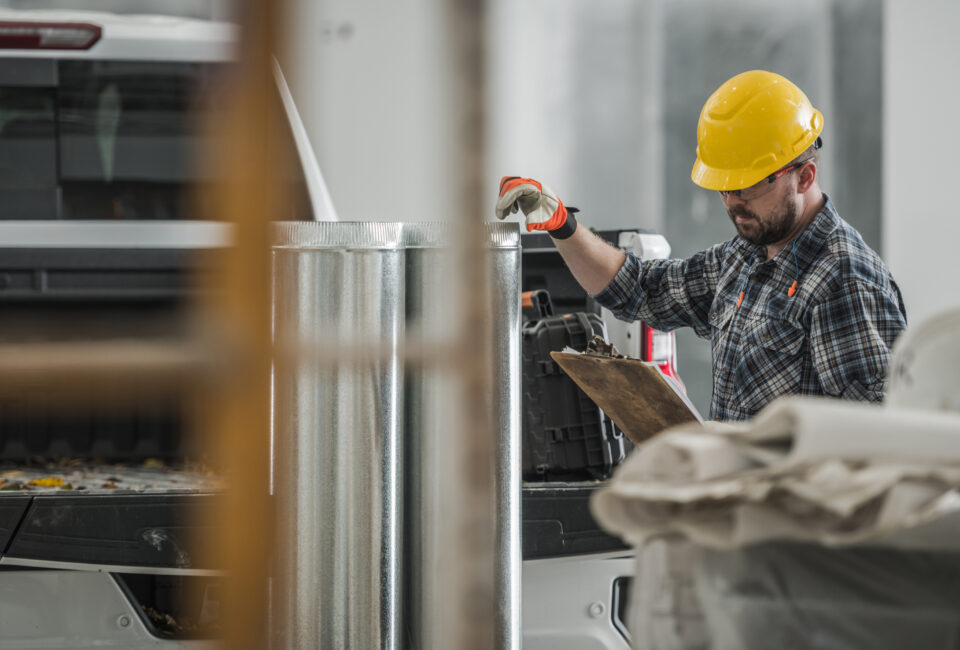Good air quality is vital in any facility or factory. However, with the type of work that is carried out in these workplaces, the quality can drop drastically in a short space of time.
Indoor air quality standards matter, but it can be hard to determine what the regulations are and how to effectively manage them. We explore this topic, explain why it’s important for your business, and provide some guidelines for indoor air quality.
What is indoor air quality?
Indoor air quality refers to the quality of air found in buildings, such as warehouses and factories, particularly regarding the well-being and comfort of those who occupy or work in them.
Poor air quality can not only make breathing uncomfortable but can lead to serious health issues for employees when not regulated. Improving air quality often involves bringing fresh air from outside, which is safer and more comfortable to breathe.
What affects indoor air quality?
Here are some common causes of poor indoor air quality:
- Lack of ventilation
- Environmental pollutants
- Carbon monoxide
- Welding fumes
- Steam
- Airborne contaminants
- Heat
- Mould
- Pesticides
- Tobacco smoke
- Dust
- Allergens
- Cleaning products
Ultimately, a lack of ventilation will exacerbate the impact of poor indoor air quality, so having the proper ventilation equipment in your commercial building is essential.
Why is indoor air quality important?
The importance of clean air in your workplace cannot be understated. Being knowledgeable about typical indoor pollutants can aid in minimising the possibility of developing certain health issues. This is crucial as poor air quality can have some adverse side effects on those within the environment.
These range from more minor issues such as:
- headaches
- struggle to focus
- encouraging bad smells
To more concerning problems like:
- damage to your eyes
- damage to your lungs
- damage to your throat
Poor air quality can range from a minor problem to a major health and safety concern. In all these circumstances, improving air quality is always a good idea and is undoubtedly worth looking into, especially as it may be required for your business.
The National Construction Code (NCC) by the Building Code of Australia (BCA) put in place AS 1668.2-2012 mechanical ventilation for acceptable indoor air quality standards, which states the types of businesses that need certain mechanical ventilation.
How to improve indoor air quality in offices and other buildings
It can be concerning to hear of the issues that can arise from poor air quality. Making improvements in this area can be achieved in several ways.
Here are some are the best steps to improving indoor air quality in your buildings. These include:
- Improve natural ventilation.
- Investing in products that can extract fumes and pollutants.
- Reducing sources of these fumes and pollutants.
To achieve these steps, there are key methods businesses to put into place.
Opening windows
This may seem self-explanatory, but opening windows is one of the best things to do when it comes to improving indoor air quality in buildings, as it encourages natural ventilation.
Making sure employees are comfortable opening windows when they need to, especially in places like commercial laundry services where air quality can change rapidly. The power of natural ventilation shouldn’t be underestimated when it comes to improve air quality.
Install ventilation equipment
Though opening windows can be very effective for more thorough removal of fumes and more, there are ventilation solutions that can help.
Equipment such as Backward Inclined Centrifugal Fans or End Wall Exhaust Fan can ensure that the air in your workplace is as pure as possible. Making these places, like warehouses, much more comfortable for those working in them.
Technology like that offered by Fanquip is designed for filtration and extraction, meaning it can drastically improve the air quality of your building when used properly.
This could be something like a Portable Blower Extractor, which can be moved around depending on where you want to extract fumes, smoke and many hazardous gases. Or perhaps equipment such as Portable Purging Fans which can encourage airflow in even the most demanding locations.

Limiting pollutants
Encouraging fresh air inside, through equipment or natural ventilation, is essential. However, it’s important to consider what else is causing the poor air quality in your workplace.
Contaminants and pollutants can cause issues depending on the type of work that goes on in your business building.
Managing industrial dust and fume hazards can be made much easier with the right ventilation solutions. Tools such as Negative Air Units can help remove even the most microscopic of contaminants from the air.

Fanquip can support your business in improving indoor air quality
Fanquip has the products and expertise that you need to get started in improving the air quality of your workplace.
Our range of products can keep your air quality from dropping below where it should be, with our team of experts helping you customise and design a ventilation system that works for you and your employees.
Take a look at our range of services and find the best indoor air quality solution for you today.
